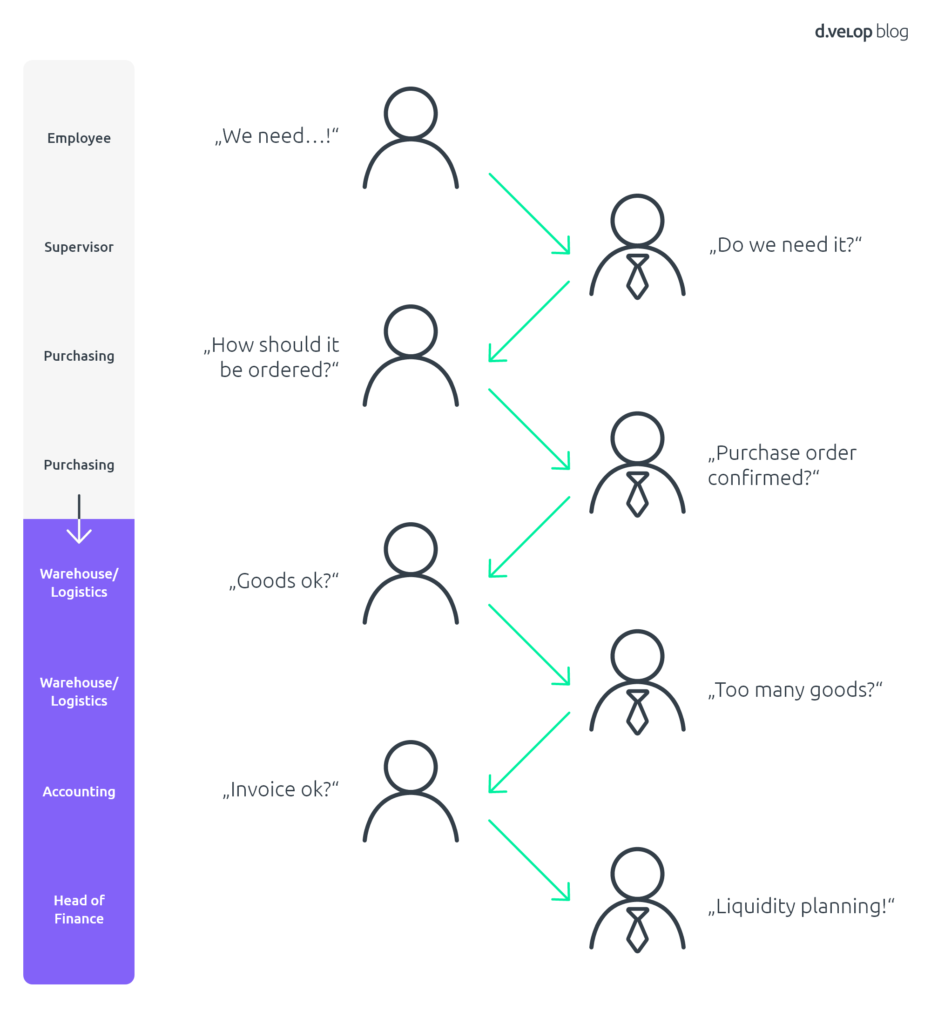Purchase-to-pay process – maybe you’re already familiar with the term, but for those who aren’t: a P2P process doesn’t have anything to do with peer-to-peer connection . Rather, it’s a short form for “purchase to pay”, sometimes also referred to as procure-to-pay. When we say P2P process, we mean the ‘purchase to pay’ process as it exists in corporate environments.
What is a purchase-to-pay process?
The purchase-to-pay or procure-to-pay process is a sequence of steps that extend from procurement of products or services through to payment of the invoice. It includes a purchase requisition, a purchase order and order confirmation, then delivery and finally processing the invoice, along with all the associated verifications, approvals, and documents.
These processes center on the exchange of data between customers and their suppliers, as well as companies’ internal verification and approval processes. Each step is a process of its own, with its own questions to be answered by a variety of different individuals and departments. The graphic below illustrates how everything fits together:

An overview of the P2P process
The complexity of the process increases with the size of the company. Because the larger the company, the more people, departments, and business partners are involved. Process optimization gets simply unavoidable.
As you might expect, intricate and lengthy processes are more likely to encounter problems. Non-automated purchase-to-pay processes that involve multiple manual steps are not only labor- and resource-intensive, they also provide ample scope for human error. Potential problems in your purchase-to-pay process can include:
- Long
turnaround times - Manual
steps between purchase requisition, purchase order, and invoicing - Lack
of transparency - Increased
employee workload - No
discount for fast payment - Ineffective
liquidity planning
How can these problems be avoided?
By optimizing the purchase-to-pay process. Process optimization is an important concept – and closely intertwined with digitalization. An automated, digital purchase-to-pay process provides an efficient structure while minimizing potential sources of error.
The intelligent software solution allows you to track the entire process and any subprocess at any point, saving you time and money.
But there are some things that should be addressed from the start: “If you digitize bad processes, all you’ll have is bad digital processes,” says Thorsten Dirks, President of Bitkom. Hence the logic that processes should be as simple as possible – and only as complicated as is absolutely necessary. Existing processes should be analyzed with this thought in mind. You need to ask questions such as:
- Are
any parts of the process already digital? - Which
ERP system is in use? - Which
employees can approve what? - How
many invoices are received on a daily basis?
Blog series on purchase-to-pay in SAP
This article is part of a new series of blog articles on the topic of purchase-to-pay in SAP. Stay tuned for more! Here we would like to remind you that these articles are primarily directed at companies who use SAP.
Why?
SAP is not only one of the most commonly used ERP systems worldwide – our software also integrates perfectly with SAP to support companies through the entire purchase-to-pay process. Find out more in future posts to be published on the blog in the coming weeks. Including: Your efficiency audit, What is maverick buying?, P2P subprocesses explained (SAP purchase requisition, SAP incoming goods, SAP invoice verification, SAP archiving) and exclusive software insights.
A guide to automated Procure-To-Pay Processes in SAP
In order to ease the transition to a completely automated procurement process, you’ll find step-by-step instructions in this white paper about how you can automate your procurement process: from analyzing your current situation to digitizing individual subprocesses. Gain insight into what a digital procurement process looks like and its benefits over the traditional process.

